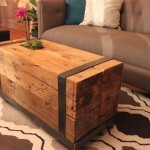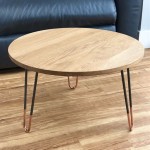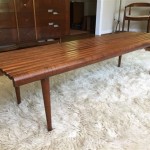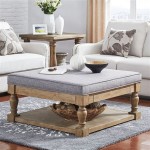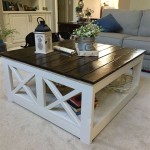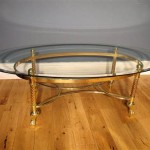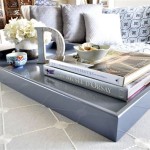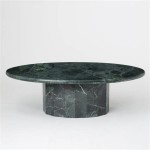```html
How To Decorate a Coffee Table: A Comprehensive Guide
The coffee table, often a central focal point in a living room, offers a prime opportunity for stylistic expression and practical functionality. Effective coffee table decoration transcends mere aesthetics; it involves balancing visual appeal with accessibility and reflecting the homeowner's personal style. This article outlines principles and techniques for decorating a coffee table in a manner that enhances the overall ambiance of the living space.
The first step in decorating a coffee table involves considering its size and shape in relation to the surrounding furniture and room dimensions. A larger coffee table can accommodate more decorative items, while a smaller table requires a more minimalist approach. The shape of the table also influences the arrangement of objects; a rectangular table lends itself to linear arrangements, while a round table suggests a more circular or radial design.
Understanding the Rule of Three and Odd Numbers
A fundamental principle in interior design is the rule of three, which suggests that arrangements of odd numbers are generally more visually appealing and dynamic than arrangements of even numbers. This principle applies directly to coffee table decoration. Grouping items in threes, fives, or sevens creates a sense of visual interest and balance. This is because odd numbers force the eye to move around the arrangement, preventing it from settling on a static or symmetrical composition. For example, a stack of books, a small plant, and a decorative object can form a compelling and balanced trio.
Applying the rule of three involves careful consideration of scale, texture, and color. Items should be varied in height and size to create visual depth. Textural contrast, such as pairing a smooth ceramic vase with a rough-hewn wooden bowl, adds another layer of interest. The color palette should complement the existing décor of the living room, incorporating both neutral and accent colors to tie the arrangement together.
Furthermore, the rule of three can be applied to different aspects of the coffee table arrangement. It can refer to the number of distinct groupings on the table, the number of items within each grouping, or the number of different color or texture elements used throughout the decoration.
The Importance of Layering and Height Variation
Creating visual interest on a coffee table often involves layering elements and varying their heights. This technique prevents the arrangement from appearing flat and one-dimensional. Layers can be achieved by using trays, books, or decorative boxes as platforms to elevate other objects. A stack of books, for example, can serve as a base for a small vase of flowers or a decorative sculpture.
Height variation is essential for creating a dynamic and visually engaging arrangement. Objects of different heights draw the eye up and down, adding dimension and preventing the arrangement from feeling monotonous. Tall elements, such as candlesticks or vases, can be balanced by shorter, wider objects, such as bowls or trays. Avoid placing objects of uniform height next to each other, as this can create a static and uninteresting effect.
When layering items, consider the scale and proportion of each object. Ensure that taller items do not overwhelm smaller ones and that the overall arrangement remains balanced. Also, consider the accessibility of items. While visual appeal is important, the coffee table should also be functional. Avoid creating arrangements that are so dense that they impede the table's primary purpose: providing a surface for drinks, snacks, or reading materials.
The principle of layering also extends to textures and materials. Combining different textures, such as smooth glass, rough wood, and soft fabric, adds depth and complexity to the arrangement. Layering different materials, such as metal, ceramic, and natural fibers, can also create a visually stimulating effect.
Incorporating Functional and Personal Elements
While aesthetics are paramount, a well-decorated coffee table should also be functional and reflect the homeowner's personal interests and style. Integrating functional elements, such as coasters, remote controls, or a decorative box for storing frequently used items, ensures that the coffee table serves a practical purpose in addition to its decorative role. These functional elements can be incorporated seamlessly into the overall arrangement, enhancing both its aesthetic appeal and its usability.
Personalizing the coffee table with objects that hold sentimental value or reflect the homeowner's hobbies and interests adds a unique touch and makes the space feel more personal and inviting. Displaying travel souvenirs, family photographs, or items related to a particular hobby can transform the coffee table into a reflection of the homeowner's personality and experiences. These personal touches should be carefully curated and arranged in a way that complements the overall aesthetic of the living room.
When incorporating functional elements, consider their design and material. Choose items that complement the overall style of the coffee table and the living room décor. For example, a set of elegant coasters made from natural stone can add a touch of sophistication, while a decorative box made from woven seagrass can provide a stylish storage solution. Avoid using generic or utilitarian items that detract from the overall aesthetic.
Personal items should be chosen thoughtfully and arranged in a way that is both visually appealing and meaningful. Avoid cluttering the coffee table with too many personal items, as this can create a sense of disorganization. Instead, select a few key pieces that represent the homeowner's personality and interests and arrange them in a way that is both aesthetically pleasing and personal.
Maintaining a balance between functional and decorative elements is crucial. The coffee table should be both visually appealing and practical, serving as a focal point and a functional surface for everyday use. Regularly decluttering the coffee table and rearranging its contents can help maintain a fresh and updated look.
Beyond the key principles outlined above, several other considerations can contribute to effective coffee table decoration. The lighting in the room should be taken into account when selecting decorative items. Reflective surfaces, such as mirrors or polished metals, can enhance the brightness of the room, while darker, matte finishes can create a more intimate and cozy atmosphere.
The surrounding furniture and décor should also be considered when decorating the coffee table. The style and color palette of the surrounding furniture should be reflected in the coffee table arrangement, creating a cohesive and harmonious look. Avoid introducing elements that clash with the existing décor, as this can disrupt the overall balance of the room.
Seasonal changes can also inspire changes in the coffee table decoration. Incorporating seasonal elements, such as pumpkins in the fall or flowers in the spring, can add a festive touch and reflect the changing seasons. These seasonal additions should be integrated seamlessly into the existing arrangement, complementing the overall style and color palette.
Experimentation is key. Do not be afraid to try different arrangements and combinations of objects until finding a look that is both visually appealing and functional. Take photographs of different arrangements to compare and contrast them, and solicit feedback from friends or family members to gain a fresh perspective.
Ultimately, successful coffee table decoration is a process of careful planning, thoughtful selection, and continuous refinement. By adhering to the principles of balance, scale, and visual interest, and by incorporating functional and personal elements, a coffee table can be transformed into a stylish and functional centerpiece of the living room.
The careful combination of these elements, tailored to individual tastes and the existing décor, ensures a coffee table that enhances the overall living space, providing both aesthetic appeal and practical usability.
```
27 Coffee Table Decor Ideas How To Style A Modern

15 Designer Tips For Styling Your Coffee Table

How To Decorate A Coffee Table Montgomery S Furniture

27 Coffee Table Decor Ideas How To Style A Modern

The Basics Of Coffee Table Styling Shades Blue Interiors

Easy Coffee Table Styling Like A Designer Joyful Derivatives

Ten Tips On Decorating Your Coffee Table Through My Front Porch

Modern Coffee Table Decorating Ideas For Your Living Room

How To Decorate A Coffee Table Like Pro Stonegable

How To Decorate A Coffee Table Houzz
Related Posts

